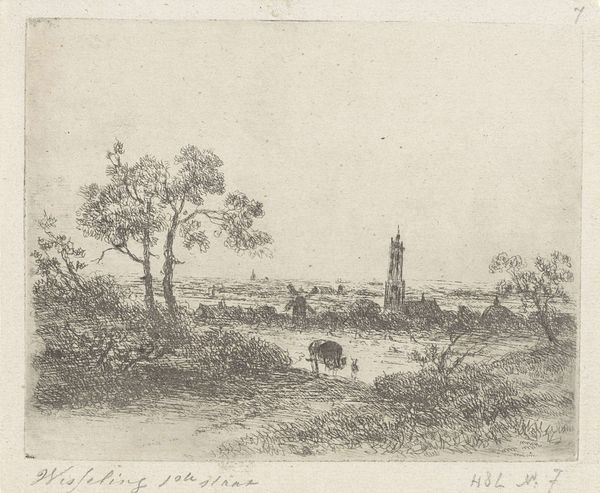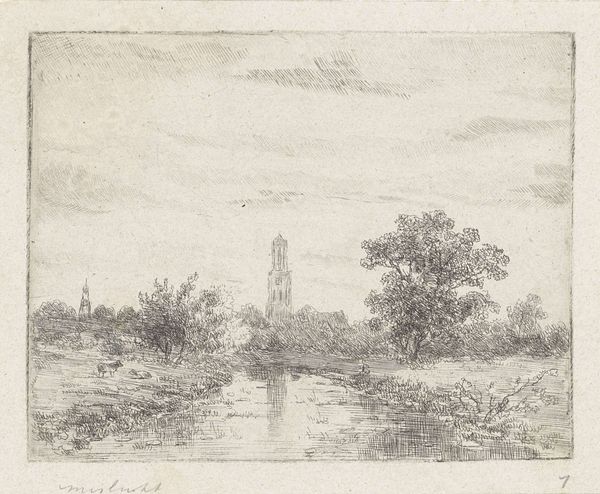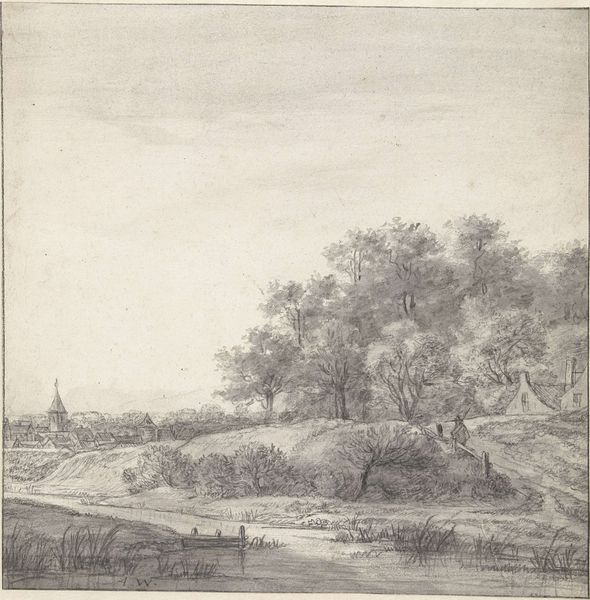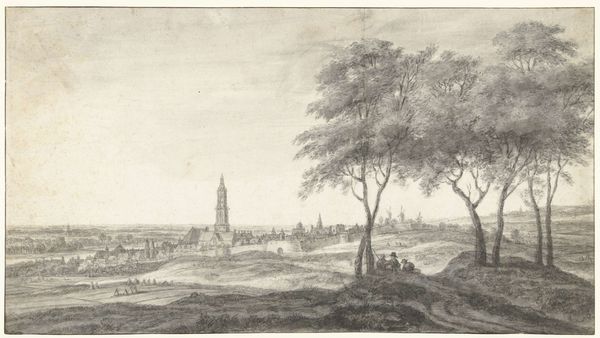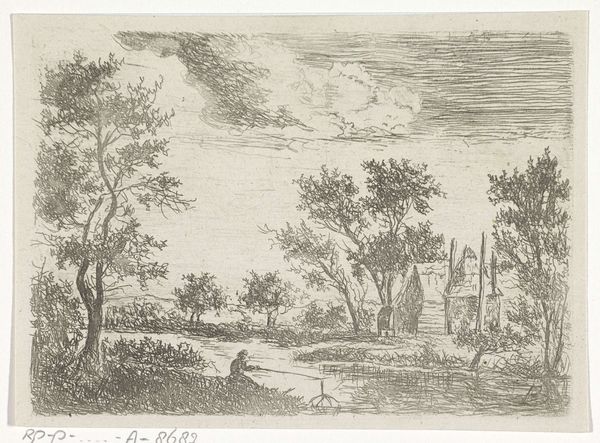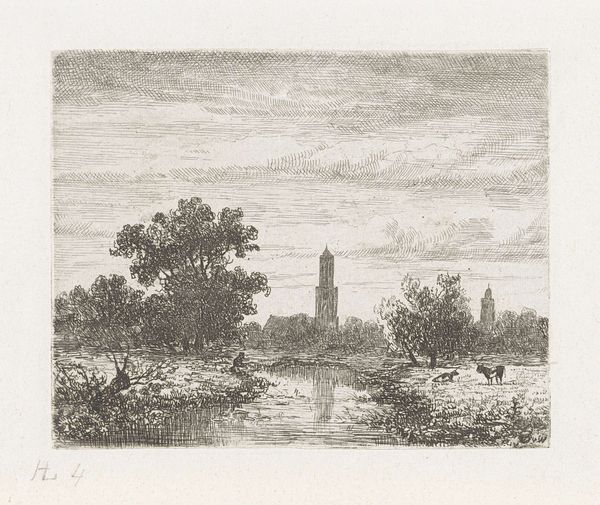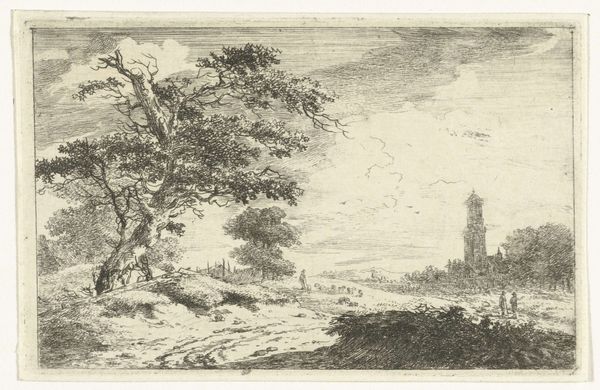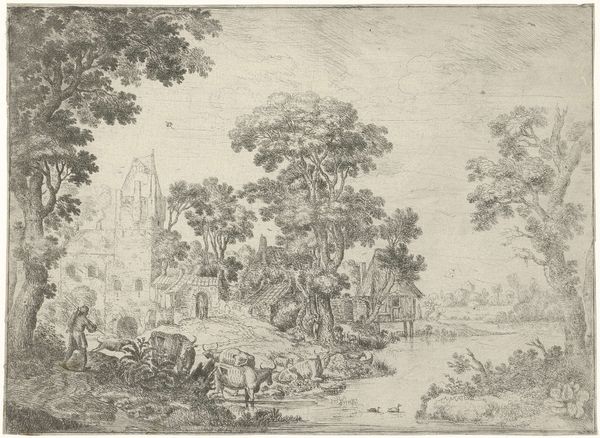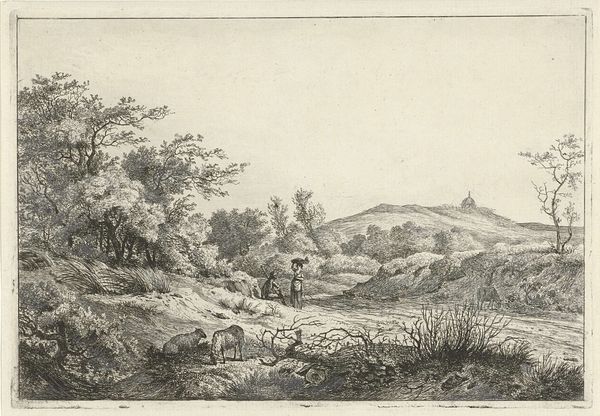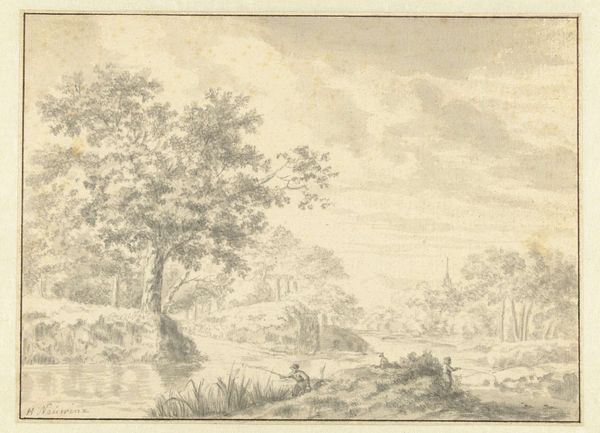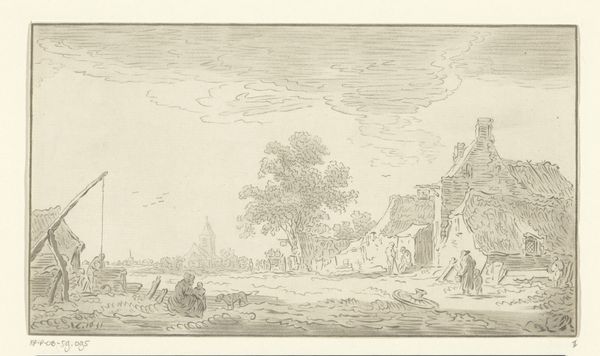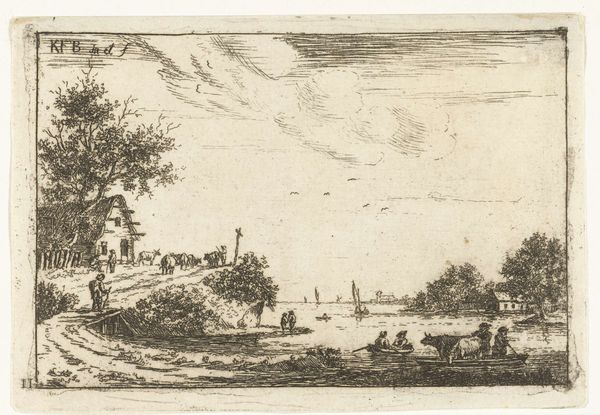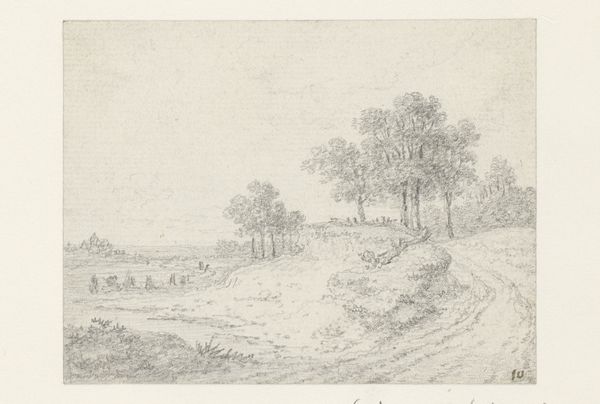
drawing, print, etching, paper, ink
#
drawing
#
aged paper
#
light pencil work
#
dutch-golden-age
# print
#
etching
#
pencil sketch
#
old engraving style
#
sketch book
#
landscape
#
river
#
paper
#
personal sketchbook
#
ink
#
sketchwork
#
sketchbook drawing
#
cityscape
#
pencil work
#
sketchbook art
#
realism
Dimensions: height 99 mm, width 125 mm
Copyright: Rijks Museum: Open Domain
Curator: Here we have "Gezicht op Utrecht(?)," a cityscape rendered with delicate etching and ink on paper. Its creation is situated somewhere between 1830 and 1878, by Johannes Pieter van Wisselingh. Editor: The overall impression is almost ethereal; the fine lines create a dreamy, nostalgic atmosphere. There’s a subtle interplay of light and shadow, a remarkable restraint in the composition. Curator: Indeed, but let’s think about what a view like this meant to 19th-century Dutch society. Urban landscapes were not just picturesque scenes; they were visual testaments to Dutch identity, to a collective memory shaped by the dynamic tension between urbanization and nature. The river in this artwork creates that very tension. Editor: While context always enriches understanding, I am immediately drawn to how van Wisselingh utilizes line weight. Look at how thin and light the etching work becomes towards the skyline, giving that wonderful sense of distance. Notice the precise layering, too, with each hatch mark serving an individual purpose, meticulously charting light and form across the surface. Curator: Right, but the composition directs our gaze towards the recognizable towers. Van Wisselingh presents them as permanent features amidst a society undergoing significant transformation during the rise of industrialization. Does the artist intentionally blur the line between realism and something that could almost be considered symbolic? Editor: The blurring technique certainly allows us a broader engagement with the architecture presented here. I like the depth, though; see how it pulls your eye, the tower as the focal point. Compositionally, this is masterful, wouldn't you say? Curator: I agree that there is clear mastery but at the time that this work was created, there was mass migration of people to the big cities. What statement, if any, is being made here by the inclusion of the figure along the riverbank? Editor: That, truly, could be up to the individual beholder of this particular art. For me, this is clearly not simply representational but interpretive. What a testament to the vision of the artist! Curator: Precisely. These scenes were never simply records; they were also vehicles for imagining—and perhaps negotiating—the evolving identity of a people within an changing world. Editor: Absolutely. Thinking of the technical brilliance paired with historical insight definitely encourages an even greater understanding and reverence for this work.
Comments
No comments
Be the first to comment and join the conversation on the ultimate creative platform.
